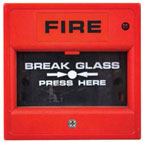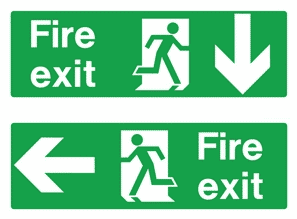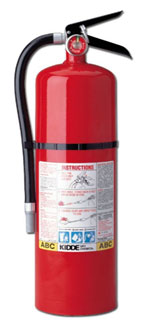- Hose Reels
- Hydrants
- Fixed Fire Systems
Passive Controls
- Fire safety must taken into account when designing building or changing the use of an existing building
- Fire Safety Certificates are required for all building construction, alterations, extensions. (see section on Fire Safety Certificates)
- Furnishings and fitting to be of required standards
Fire Doors
- Stop the spread of fire and smoke for a period of time
- A fire door can not stop the spread of smoke and fire if its open
- Should be fitted with a self-closer
- Must be kept shut - no wedges holding open
- Can have electromagnetic hold open device connected to fire alarm
Management Controls
Fire Training
- Statutory Requirement to have staff trained
- Training must be specific to your organisation
- Training must be by a competent provider
- It must be assessed and repeated regularly
Fire Drills
- Fire Drills must be held minimum twice a year
- Simulate one exit blocked by fire
- Choose safe assembly area
- A procedure must be put in place to ensure the premises is vacated
- Keep a record & record any problems encountered
Record Management
- All workplaces must have a Fire Safety Register
- Management functions
- Assigned duties
- Record of drills/evacuation
- Inventory of fire protection equipment
- Details of inspection & test including Certificates
Fire Prevention – General Housekeeping
- Give Heat sources adequate space for heat to dissipate
- Don’t overload electrical sockets
- Turn off all electrical appliances after use
- Avoid the buildup of papers and refuse
- Store combustibles appropriately. Not along escape routes. Not under stairs
- Maintain adequate means of escape
- Keep escape routes clear of all obstructions
To Summarise
- Identify risks in your workplace and eliminate hazards
- Install service and maintain a Fire detection and Alarm system and Emergency Lighting
- Provide service and maintain Fire Extinguishers
- Train staff and practice fire drills
Fire Safety Register
All workplaces and public buildings must have a robust fire safety management system. This includes the maintenance of a Fire Safety Register on the premises.
The Fire Safety Manager who is responsible for the implementation and oversight of the fire safety programme should keep a Fire Safety Register as a complete record of all fire safety matters on the premises.
We have provided a template for a Fire Safety Register below:


